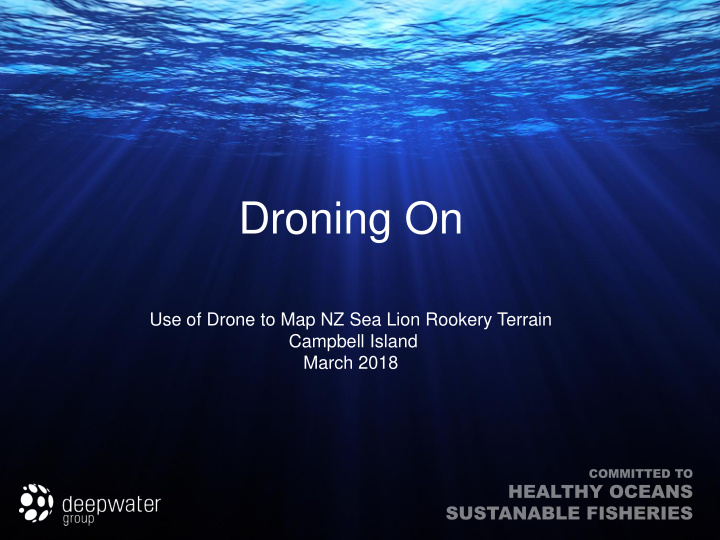



Droning On Use of Drone to Map NZ Sea Lion Rookery Terrain Campbell Island March 2018
https://www.dropbox.com/s/ysx7v95kd56c67f/Campbell%20Island%20%3A%20Davis%20poi nt%203D%20Teaser.mov?dl=0
Notes from Day 1 Davis Point • Able to fly drone in 30-40 knots estimated (50+ knots measured on vessel that day • 3 flights inc 3 min test flight = 27 mins fly time which achieved mapping for Davis Point • Flew lower than plan due to wind - approx 30-40m. INSERT IMAGE HERE • Wide range of species of seabirds in and around area and drone during period of flights • Sleeping bird sat through start up and take off despite being only 30m away • Some species attracted to look e.g. Sth royal, N giant petrels and skua but no negative interactions such as attack, fear or close calls • Few NZSL in area, one female with pup barked at drone
Notes from Day 2 Paradise B (aka Shoal Point) • Better fly conditions • Fewer birds in the air but red billed and black backed gulls showed no concern whilst in close vicinity on foreshore (RBG continued bathing during start up etc, BBG pr had juvenile) • Some lions came ashore during survey INSERT IMAGE HERE • 3 flights 22 mins duration achieved mapping goal
Summary • Drones can fly when it’s quite windy • Their batteries don’t like being too cold – start up issues • Collect data very quickly • Need an expert to fly them and a “watcher” H&S for INSERT IMAGE HERE humans and wildlife • Can create maps and images that allow for rapid understanding and visualisation for those who have been “left behind” but may be the decision makers, funders, techos and etc • Appear in this instance to have very little negative effect on surrounding wildlife (birds on ground and aerial) but this would need to be considered on a case by case basis e.g. breeding seabird colonies
Questions?
Recommend
More recommend